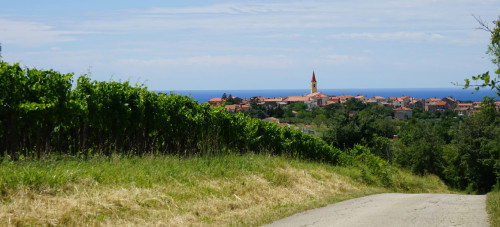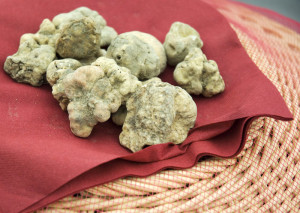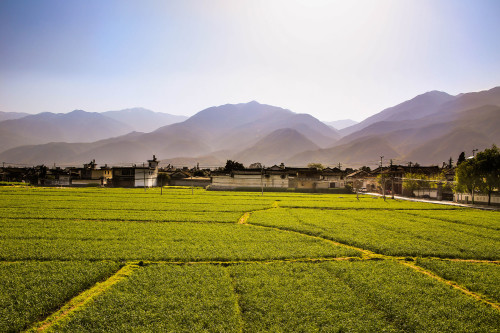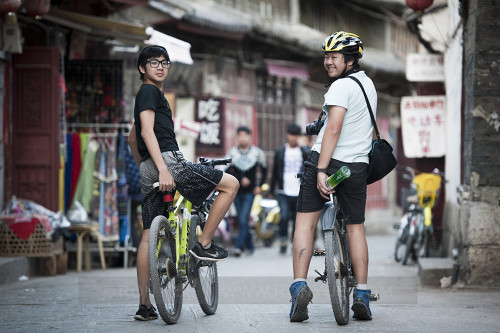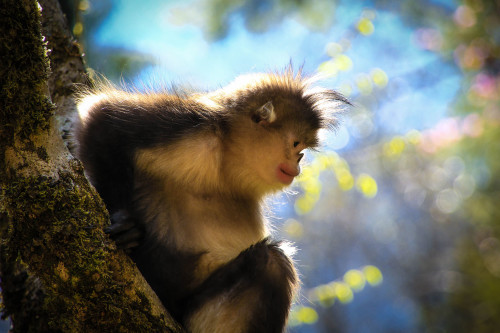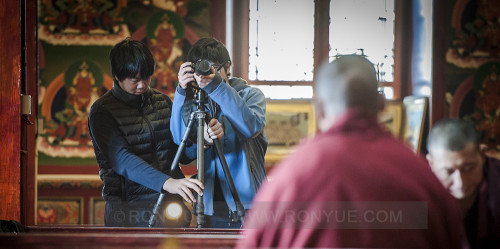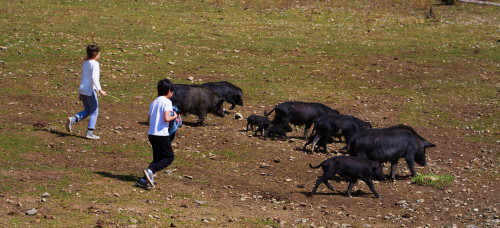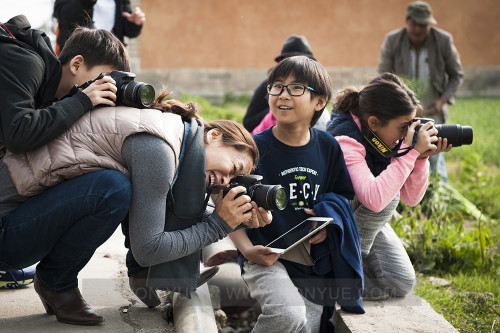Something seemed different here. The previous evening, we had crossed the border from Slovenia into the Croatian region of Istria, a triangular peninsula that points south into the Adriatic. After driving south for a little while, Angie and I stopped at San Rocco, a small hotel in the small town of Brtonigla in the triangle’s northwest corner.
A friendly receptionist greeted us and helped us check in. The receptionist turned porter and helped us carry our bags to the room. Then, when we came down for dinner, the porter had become our waiter, expertly explaining all the dishes and, to Angie’s delight, how each of them was made. He went on to recommend superbly matched glasses of wine for each course. When Angie observed that had she rarely met a waiter who knew so much about the dishes he served, we discovered that, in fact, our receptionist-porter-waiter, Teo, was also the chef. And, as it turned out the next morning, he is also the third in a story of four generations.
Over the years, I’ve lived in quite a few different countries: Austria, France, America, Japan, and China. Living in each meant, of course, moving from place to place. There is, as we learned after breakfast, another way of living in different countries. Teo’s grandfather was born in the same house in Brtonigla, then part of Austria-Hungary. By the time Teo’s father was born, Brtonigla had “moved” to become Italian in the inter-war years. Teo was born in the same place, which was then part of Yugoslavia. His son, net yet a teenager today, came into this world when Brtonigla had become part of Croatia.
With the family’s youngest generation playing in the dirt of a shallow pit that is destined to become the hotel’s new swimming pool, as we sat and talked with Teo and his father, Tullio, two things became evident: one, clearly stated, was that the family is more optimistic about the future than they can remember; the other, not stated but felt, was that they were filled with tremendous pride in their homeland, and in particular the produce that springs from Istria’s fertile land and surrounding sea, and the traditions that turn the harvest into culinary treasures.
The sea provides excellent langoustines, oysters and fresh fish; while the land offers asparagus, truffles, olive oil, wine, and ham – all of which are the pride of Istria’s inhabitants. This strong feeling of pride is tinged with a sense of injustice. Talk to Istrian truffle hunters and they will tell you, without any hesitation, that their truffles are at least as good as the ones from Alba: “In fact, some Piedmontese truffle merchants come to Buzet to buy our white truffles!” Talk to an olive oil producer – in our case, the producer of one of the world’s best olive oils, as ranked by expert Marco Oreggia – and he will say that in Roman times the best olive trees were moved within the Roman Empire from today’s Istria to Italy. Everyone seem to be saying that little Istria has battled for centuries against overwhelming odds to put itself on the culinary map.
But put itself on the map it will. In preparation for the trip, I read a charming article, entitled “Istria is not the new Tuscany”. It seemed to suggest that Istrians needn’t look to Italy to learn how to attract visitors and that their culinary heritage is worthy of recognition on its own terms. However I disagreed with the author’s conclusion that “No, Istria is not the new Tuscany.” Instead I feel that it’s more like the old Tuscany, devoid of crowds and brand names and redolent of “how things used to be”. Not to mention – though this is a story for another time – the peninsula’s traffic-free roads and back roads are a pure joy to drive…
P.S. My research was for a new On the Road Experiences itinerary: “Austrian-Hungarian Lands: A driving holiday (Part I)” that will wind through the Czech Republic, Austria, Slovenia and Croatia. E-mail me ([email protected]) if you’d like to be among the first to hear more about our newest European journey.
